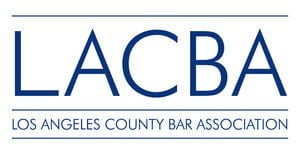CDCR parole hearings for life-term inmates determine whether the inmate is suitable for parole. The legal standard to determine whether an inmate is suitable for parole is “present danger to society.” If there is some evidence of present dangerousness, the board can deny parole.
But how does the parole board make such an important decision? There are four factors in particular which heavily influence the board.
The California Board of Parole Hearings is made up of twelve commissioners who are appointed by the governor and confirmed by the state senate. CDCR parole hearings for life-term inmates determine whether the inmate is suitable for parole. The legal standard to determine whether an inmate is suitable for parole is “present danger to society.” If there is some evidence of present dangerousness, the board can deny parole.
Up until 2008, the CDCR parole board commonly used the offense for which the inmate was incarcerated – called the commitment offense — as some evidence of present dangerousness. This practice resulted in the denial of parole in the vast majority of cases. But in the In re Lawrence decision in 2008, the California Supreme Court said that the original offense is no longer evidence of present dangerousness, after the passage of many years and substantial efforts at rehabilitation.
Since 2008, the board frequently uses an inmate’s supposed lack of insight or remorse, or failure to take responsibility for the commitment offense, or disciplinary violations – or any combination of these as evidence of present dangerousness.
What does insight have to do with parole suitability?
One major factor the CDCR parole board uses in determining parole suitability is the inmate’s insight into what caused their commitment offense . This is tricky for many inmates because there is a fine line between demonstrating insight and blaming others for one’s own bad decisions. Developing insight often involves an examination of the inmate’s early life circumstances, including the environment in which he was raised, including any gang involvement or substance abuse history.
Demonstrating insight means explaining the “why” behind the crime without attempting to give a reason or justification. This requires understanding what brought the inmate to a place where he could make the decision to become involved in the life-term crime. More importantly, it involves understanding how to avoid similar situations in the future – which demonstrates a lack of present dangerousness to society. From the board’s perspective, one cannot show that he will respond appropriately and act responsibly in the future, if he doesn’t first understand what got him to a place where he committed the life-term crime in the first place.
This insight analysis also applies to any significant disciplinary history while incarcerated.
The influence of remorse on parole suitability
The CDCR parole board expects inmates to articulate appropriate remorse for the impact of the commitment offense. This means nothing less than understanding and accepting the full breadth of the impact of the commitment offense. A common question at parole hearings is: “who are your victims?” The inmate needs to understand that the victims of the offense go far beyond the direct victim who was physically affected. Victims include the direct victim’s family, the investigators of the offense, the perpetrator’s family, and many others. The impact of the crime can potentially extend all the way to an impressionable youngster who heard about the crime and thought the perpetrator was cool, which in turn, led him to a life of crime. In essence, his victims are also victims of the inmate.
To demonstrate appropriate remorse, the inmate needs to show that he understands how others are impacted by his actions and that he is committed to taking positive actions in the future to give back to society, in hopes of making up for some small part of a terrible act the inmate committed many years ago.
Culpability: what does it mean to the CDCR parole board?
To be found suitable for parole, the inmate must show that he is committed to improving himself and to helping other avoid similar mistakes. Culpability goes well beyond taking responsibility – it means spiritually carrying the pain and suffering of the victims with him, and using that as a catalyst for positive change. It means giving back at every opportunity and continually working to improve one’s self. It often takes the form of fully engaging in self-help groups including anger management, victim awareness, 12-step programs, and any other resources that are relevant to the inmate’s particular circumstances.
Responsibility and parole suitability
The inmate must take responsibility for his role in the commitment offense. This includes taking responsibility for the lifestyle he was living at the time of the commitment offense, which likely led him to a position where he could be involved in the commitment offense. The inmate must take full responsibility for his own decisions – he must not minimize, rationalize, or attempt to justify why or how the offense occurred. The board is not there to re-try the case. Instead, their role is to determine whether the inmate is currently dangerous. In order to allay concerns the CDCR parole board may have, inmates must admit that they were terrible people a long time ago and take responsibility for all of their bad decisions. Only then can they demonstrate that they have learned from those bad decisions and are now equipped with the tools and desire to do better.
Are you or a loved one ready for parole?
In recent years, the CDCR parole board has been doing a much better job of considering the totality of an inmate’s circumstances, which has resulted in a much higher percentage of parole grants. Being suitable for parole takes work – it takes introspection and self-help classes, and a commitment to being a better person.
Looking for expert advice about a parole suitability hearing, including insight into other factors which influence CDCR parole board decisions, such as a life-term inmate’s disciplinary history and parole plans? Contact parole attorney Don Hammond for a free consultation. Mr. Hammond represents clients throughout the greater Los Angeles area, including inmates incarcerated in Lancaster (CSP-LAC), Chino (CIM/CIW), and Tehachapi (CCI), as well as other California State Prisons.
The 4 pillars of CDCR parole suitability
for life-term inmates
Insight, remorse, culpability, responsibility
by Don Hammond, Post-Conviction Relief Attorney
The California Board of Parole Hearings is made up of twelve commissioners who are appointed by the governor and confirmed by the state senate. CDCR parole hearings for life-term inmates determine whether the inmate is suitable for parole. The legal standard to determine whether an inmate is suitable for parole is “present danger to society.” If there is some evidence of present dangerousness, the board can deny parole.
Up until 2008, the CDCR parole board commonly used the offense for which the inmate was incarcerated – called the commitment offense — as some evidence of present dangerousness. This practice resulted in the denial of parole in the vast majority of cases. But in the In re Lawrence decision in 2008, the California Supreme Court said that the original offense is no longer evidence of present dangerousness, after the passage of many years and substantial efforts at rehabilitation.
Since 2008, the board frequently uses an inmate’s supposed lack of insight or remorse, or failure to take responsibility for the commitment offense, or disciplinary violations – or any combination of these as evidence of present dangerousness.
What does insight have to do with parole suitability?
One major factor the CDCR parole board uses in determining parole suitability is the inmate’s insight into what caused their commitment offense . This is tricky for many inmates because there is a fine line between demonstrating insight and blaming others for one’s own bad decisions. Developing insight often involves an examination of the inmate’s early life circumstances, including the environment in which he was raised, including any gang involvement or substance abuse history.
Demonstrating insight means explaining the “why” behind the crime without attempting to give a reason or justification. This requires understanding what brought the inmate to a place where he could make the decision to become involved in the life-term crime. More importantly, it involves understanding how to avoid similar situations in the future – which demonstrates a lack of present dangerousness to society. From the board’s perspective, one cannot show that he will respond appropriately and act responsibly in the future, if he doesn’t first understand what got him to a place where he committed the life-term crime in the first place.
This insight analysis also applies to any significant disciplinary history while incarcerated.
The influence of remorse on parole suitability
The CDCR parole board expects inmates to articulate appropriate remorse for the impact of the commitment offense. This means nothing less than understanding and accepting the full breadth of the impact of the commitment offense. A common question at parole hearings is: “who are your victims?” The inmate needs to understand that the victims of the offense go far beyond the direct victim who was physically affected. Victims include the direct victim’s family, the investigators of the offense, the perpetrator’s family, and many others. The impact of the crime can potentially extend all the way to an impressionable youngster who heard about the crime and thought the perpetrator was cool, which in turn, led him to a life of crime. In essence, his victims are also victims of the inmate.
To demonstrate appropriate remorse, the inmate needs to show that he understands how others are impacted by his actions and that he is committed to taking positive actions in the future to give back to society, in hopes of making up for some small part of a terrible act the inmate committed many years ago.
Culpability: what does it mean to the CDCR parole board?
To be found suitable for parole, the inmate must show that he is committed to improving himself and to helping other avoid similar mistakes. Culpability goes well beyond taking responsibility – it means spiritually carrying the pain and suffering of the victims with him, and using that as a catalyst for positive change. It means giving back at every opportunity and continually working to improve one’s self. It often takes the form of fully engaging in self-help groups including anger management, victim awareness, 12-step programs, and any other resources that are relevant to the inmate’s particular circumstances.
Responsibility and parole suitability
The inmate must take responsibility for his role in the commitment offense. This includes taking responsibility for the lifestyle he was living at the time of the commitment offense, which likely led him to a position where he could be involved in the commitment offense. The inmate must take full responsibility for his own decisions – he must not minimize, rationalize, or attempt to justify why or how the offense occurred. The board is not there to re-try the case. Instead, their role is to determine whether the inmate is currently dangerous. In order to allay concerns the CDCR parole board may have, inmates must admit that they were terrible people a long time ago and take responsibility for all of their bad decisions. Only then can they demonstrate that they have learned from those bad decisions and are now equipped with the tools and desire to do better.
Are you or a loved one ready for parole?
In recent years, the CDCR parole board has been doing a much better job of considering the totality of an inmate’s circumstances, which has resulted in a much higher percentage of parole grants. Being suitable for parole takes work – it takes introspection and self-help classes, and a commitment to being a better person.









